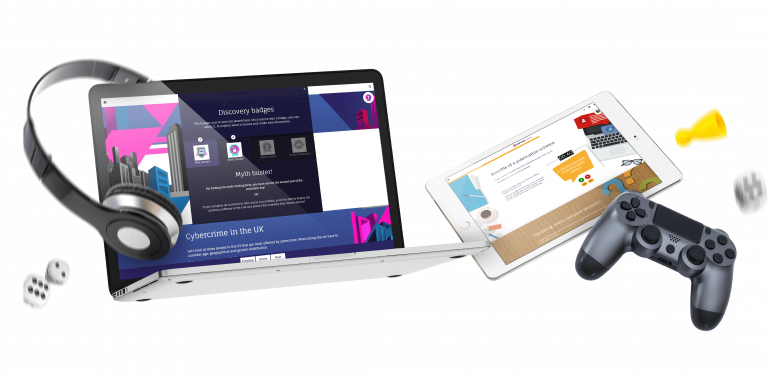The compliance revolution is coming. Are you ready?
February 19, 2018
Our corporate training landscape has changed significantly in the past few years. With all these new technological changes becoming the norm in some parts of the L&D function, our compliance training doesn’t seem to be keeping up.
It’s still seen as a necessary evil in many contexts and is often developed separately to the rest of learning. With mandatory learning often being some of the first training your learners undertake, is it sending the right message? Is it giving your learners a good or bad impression of the future learning they’re yet to undertake?
Stakeholder buy in continues to be an issue
We know there are common problems when it comes to compliance training including employee fatigue, stakeholder buy in and development costs. We found that quite a lot of organisations are experiencing issues around learner’s negative perceptions of compliance training, showing we still have more to do when it comes to getting our learners to love mandatory training.
You’re probably thinking: “this is old news”. Which is correct. These challenges are nothing new, so why are we even still talking about it?
Because there’s still a massive discord between compliance and the rest of our L&D. It’s often siloed or isolated from the wider L&D strategy and isn’t thought about in the same way as other training programmes.

The future of compliance training
By 2020 the organisational landscape could look a little like this:
• Four generations of workers, all with varied tech abilities
• More than ⅓ of the desired core skill sets of most occupations will be comprised of skills that are not yet considered crucial to the job today
• BYOD fully integrated into most working environments
• Technology embedded in most aspects of work
With so much change predicted, what should we do? How can we begin to embrace the changes that will inevitably happen in the future? If we’re going to be properly prepared, changes need to start now.
We need to be ready to embrace ambiguity. And we absolutely need to evolve our L&D strategy to something much more cohesive.

Evolving our L&D strategy
Does your L&D strategy integrate compliance in this way?
By putting compliance and induction training at the heart of our overall L&D strategy, we allow it to blend better with other learning programmes. It doesn’t feel siloed because frankly, it isn’t.
This approach to compliance ensures it is synonymous with other training and delivers a more cohesive message overall to learners.
So, what should we be doing?
• Build a strategy that incorporates compliance as a core part of training
• Create role-specific training, knowledge and performance enhancing training that wraps around compliance courses and onboarding programmes, complementing it and ensuring synergy between training
• Generate awareness and buzz around training using campaigning, gamification elements and social learning, ideally all hosted on an open LMS.
New approaches for your compliance training
So, as we’re looking to modernise and evolve our compliance training and our overall approaches in L&D, here are some new, fresh ways to bring your compliance training back to life.

1. Selfie videos and interactive video
• Selfie videos – Very cost-effective, can help to raise personal brand awareness and raise profiles of senior leaders and staff within the business. They can also humanise complex mandatory subjects such as health and safety and anti-bribery
• Interactive video (click to see an example) – More complex and more expensive to make than selfie videos, but further engages learners with rich media and learning interventions
Ultimately, your learners are already using video to upskill themselves outside of work (we’ve all Googled some form of how-to video), so L&D must start tapping into this existing behaviour to better engage learners and drive results.
2. Capturing hearts and minds with learning games
According to a recent survey, 89% of people said they’d be more engaged by the introduction of a points system. A staggering 79% of participants said they would be more productive and motivated if their learning was more like a game, with 62% claiming they’d be motivated by leaderboards and competition with colleagues.
- 89% of people would be more engaged with the use of a points system
- 79% would be more productive and motivated if learning was more like a game
- 62% would be motivated by leader boards and competition with colleagues
People don’t think that a game can work in a compliance environment because of the nature of the topic, but games drive engagement and utilise a range of proven tools which already work outside of your organisation’s training. Just because a subject matter is serious doesn’t mean a game negates that fact. Things like leaderboards, points, avatars & badges are all effective motivational and engagement tools which can work very well in compliance contexts.
The thing with gamification is to consider why you’re doing it in the first place. The aim of all this motivation and engagement is to create the ‘buzz’ in learning and motivating learners to complete training on their own terms.
It must be said though, gamification is not a silver bullet and not applicable in all scenarios. Your company’s ability to use gamification will largely be informed by your creative innovation. Gamification, like all good e-learning, relies heavily on having great instructional design and should not be regarded as a flippant solution to declining pass rates. It works, but it’s still e-learning and needs to be devised as such.
3. Closing knowledge gaps with action plans
Historically, the aim of compliance training is simply to pass, to tick a box. Usually, the pass mark is 80% or above which gives room for one or two incorrect answers. It’s not a bad thing to deem someone as competent but with room for improvement, but what do we do about all those incorrect answers?
What if the question your learners got wrong comes up in the live environment? What if all of your staff all get the same question wrong? This could cause a serious operational and compliance challenge, but what can we do to rectify it?
Configure your compliance material so that it gives dynamic recommendations to an array of resources based on your learners’ knowledge gaps
4. Action planning is a great start if you’re not already using it.
Here’s how it works:
• Learners undertake their tests and reveal any topics that need refreshers
• Support the learner with additional resources to supplement and close knowledge gaps, including PDFs, videos, emails and more
How far you act is entirely up to you, for example you could look to integrate these into your PDPs. Our LMS allows the results of tests to unlock the necessary content. That way there’s an audit trail and the course can’t be completed until the follow up reading has been done.
The key point here is that organisations need to use results to close knowledge gaps and safe-guard not only the organisation, but their employees. Compliance must be given the respect it deserves, and action planning can really help with that.
Getting started; the first step
All this is going to be a challenge if you try to take it all on at once. So, what are some of the critical baby steps and where do you start?
- Begin identifying projects and opportunities where you can start to explore and add some of these new approaches; remember to start small initially
- Use data in your LMS to see what works with learners and what your staff are responding to best and then do more of that
- Use data from smaller examples to help build business cases
- Start talking and sharing with key stakeholders NOW to get early buy in for bigger changes down the line
Realistically, we’re talking about shifting the culture of learning in your organisation, which is not going to happen overnight. However, if we can start to work towards a more strategic approach to compliance training and embedding it more into the everyday lives of our learners, we’re taking the necessary steps to start futureproofing our learning. And if you’re not sure where to start, we’re here to help you figure things out, so don’t forget to talk to us if you have any questions about where to begin.
Compliance and Performance Support: the opportunity
Reviewing learning trends Michael Treser observed that learning was no longer ‘an episodic activity, mostly taking place during the onboarding stage’. At Learning Pool, we feel this is particularly true for compliance training.
Performance Support is an effective means to retain and apply what you’ve learned. We believe it can move compliance training from being a necessary evil and unavoidable burden on productivity to an opportunity to enhance performance and make that training more relevant and effective.
It’s not just about the cost of not doing compliance, it’s about the benefits of having employees who recognise the value of compliance and apply it in the way they work.
Find out more
Our compliance training combines gamification with compelling storytelling and outcome driven content to create engaging, endorsed content that’s adaptable.
Fill out the form below for your 7 day free trial of our Compliance catalogue and see how we can deliver engaging mandatory training that truly sticks with your learners.
About the author
Paul Healy has worked in the learning industry since 2003 in sales, learning consultancy, and programme management. He specialises in assisting companies with change management and innovation agendas.
Got a learning problem to solve?
Get in touch to discover how we can help

